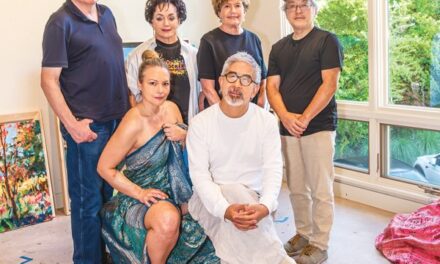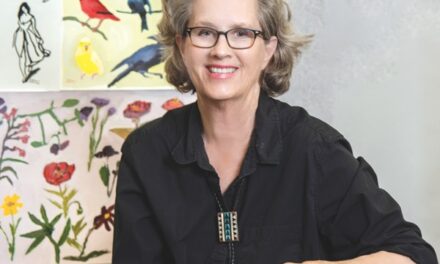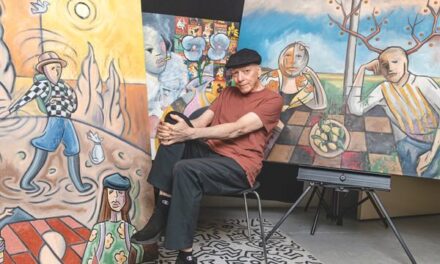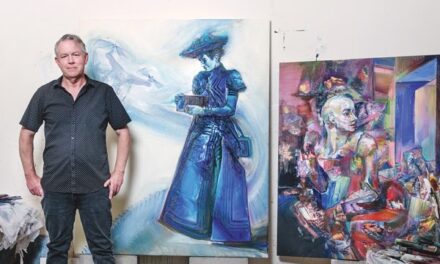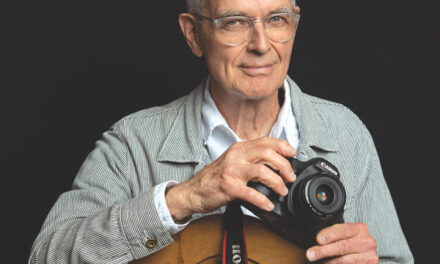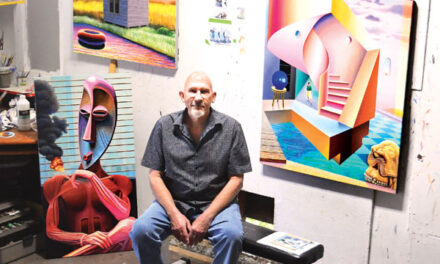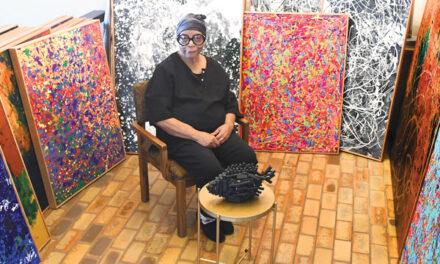A Stitch in Time
Community art project sheds light on refugee crisis
By Daniel Barnes
September 2020
Multi-media artist Jennifer Kim Sohn understands that most people have nostalgic associations with crafts like sewing and stitching. There’s a sense of comfort connected to the medium, which Sohn uses to explore serious social and environmental issues.
“I want to bring these difficult issues through the comfortable artform so I can disarm people a little bit,” says Sohn, a South Land Park resident. In previous works, Jennifer Kim Sohn used fabric frogs to confront environmental pollution and fabric pillows to build awareness of human trafficking. “The images are not in your face. I want the viewers to arrive on their own decision, or at least give them room to reflect on these issues.”
Sohn recently completed a large-scale community art project called 25 Million Stitches, which draws attention to the global refugee crisis. More than 2,100 volunteers from all over the world created 25 million hand-stitches across approximately 2,000 fabric panels. Each stitch represents one of the estimated 25 million people forced to flee their homelands because of genocide, war, poverty, drought, violence and other threats.
“In my own struggle to comprehend this number, I wanted to create a project that would provide meaningful clarity of the number of people affected,” Sohn says. “Participation has mushroomed to include people all over the United States and the world—all wanting to voice their support and solidarity for those who have been forced to flee their homes.”
Volunteers participated in the project from all 50 states and numerous countries, including India, Vietnam, Australia, New Zealand, Jordan, Tanzania, Ecuador, China, Netherlands, Iceland, Germany, Poland, Romania, Russia, Uruguay, France, Mexico, Spain, Austria and Canada.
Sohn received stitches from Southeast Asian refugees living in the Sacramento area, octogenarian Korean line dancers from Irvine, Palestinian refugees from the United Kingdom, third graders in the Dominican Republic and Waldorf students in Sacramento. The youngest participant was a 5-year-old who lives in San Francisco.
“I’ve heard that some people stitch in public places, and it usually generates some conversation,” Sohn says. “One part of this project is to build a community of concerned citizens and start a dialogue that I think we need to go beyond this political divide we have on the refugee issue.”
The concept for 25 Million Stitches began in 2016 when Sohn began seeing images of Syrian and African refugees on television. “My first reaction was to ignore it because it seemed like it was such a complicated issue,” she says. “But I couldn’t just shake it off, so I started doing sketches of the refugees.”
Jennifer Kim Sohn also began researching the issue and found the United Nations Refugee Agency reports 25.9 million refugees worldwide. “That was just mind-boggling,” she says. “I thought that if I could make art that physically and viscerally represents this number, then that would be a good place to start people to think about this issue, about how big the problem is.”
She got people to engage with 25 Million Stitches through word of mouth, initially reaching out to fellow textile artists. “But I realized it would be a lot more meaningful and impactful if everybody could contribute,” explains Sohn, who drew inspiration and energy when opening the panels she received in the mail. “I’m so humbled when I see panels that clearly took hours and hours to finish.”
For her part, Sohn immigrated to America from South Korea as a teenager. She earned her BFA from Carnegie Mellon University in Pittsburg and her MFA from Stanford University, and she started working as a graphic designer. After a nearly 20-year professional absence, Sohn took a fiber sculpture course taught by Carole Beadle at the College of Marin. The class inspired her to become a fabric artist.
“I like the fact that fabric comes with a story that I can spin,” she says. “I think what I try to say with my art is not very different from what we read in our daily news. It’s usually trying to bring light into some of the dark stories.”
Sohn plans to show the finished work at Verge Center for the Arts in Sacramento, where she is a resident artist. “It’s a huge space, and we want to hang the panels. It would be like a kelp forest that you walk through,” she notes. The show is scheduled to open June 12, 2021.
“The goal of the installation is to create an experiential textile art piece that allows participants to walk among the panels in order to feel and see the enormity of the number of people dislocated from their homes,” Sohn says. “Textile media uniquely exudes a traditional feel of home, which in this exhibit is juxtaposed amongst a message showing those who no longer have their homes.”
For more information, visit jenniferkimsohn.com.
Daniel Barnes can be reached at danielebarnes@hotmail.com. Follow us on Facebook, Twitter and Instagram: @insidesacramento.





